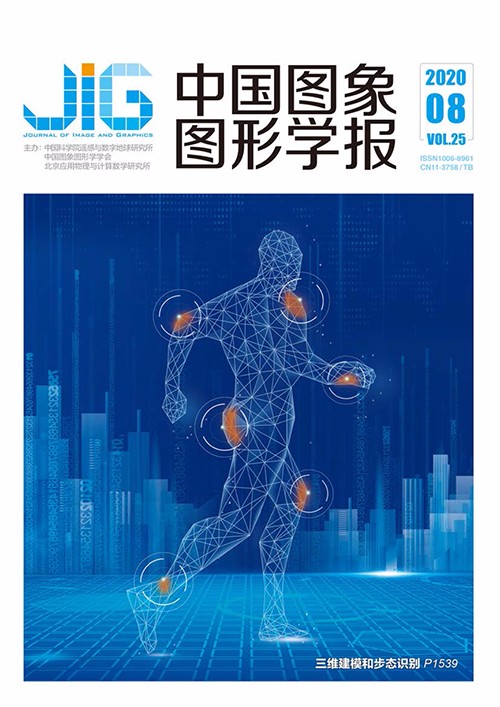
神经纤维跟踪算法研究进展
摘 要
神经纤维跟踪通过整合纤维局部结构方向信息,可以描绘出具有解剖学意义的空间纤维结构,是扩散磁共振成像的关键步骤,对临床医学与神经科学等有着重大意义。然而,大量的研究和临床应用表明,目前的神经纤维跟踪算法重构出了大量虚假纤维而备受质疑。为了给研究者和临床医生选择神经纤维跟踪算法提供依据,本文深入分析了当前的主要跟踪算法并进行定量评估与定性比较。从确定型、概率型和全局优化等方法详细介绍各典型跟踪算法;利用Fibercup和国际医学磁共振学会(International Society for Magnetic Resonance in Medicine,ISMRM)2015挑战数据进行实验,定量对比9种常用算法的优缺点,并分析了这些算法在实际临床数据的成像结果及其面临的挑战;结合实验结果与算法理论分析各算法的内在联系与区别。不同跟踪算法在效果上有着较大的差异,确定型算法在描绘主要纤维结构上更为明显,概率型算法描绘的纤维分布更为全面,全局优化算法的纤维轨迹更符合全局数据而避免了误差累积问题。纤维跟踪对于分析人脑神经纤维连接具有很高的研究价值和应用价值。不同类型的算法有着各自的优缺点,目前并没有一种跟踪算法可以摒弃其他算法缺点而结合所有优点。另外目前纤维跟踪算法的结果与实际情况均有着一定差距,如何描绘出更为精确的纤维轨迹仍是一个具有挑战性的问题。
关键词
Research progress of neural fiber tracking
Li Mao1, He Jianzhong1, Feng Yuanjing1,2(1.Institute of Information Processing and Automation, School of Information Engineering, Zhejiang University of Technology, Hangzhou 310023, China;2.Zhejiang Provincial United Key Laboratory of Embedded Systems, Hangzhou 310023, China) Abstract
Diffusion magnetic resonance imaging is currently the only non-invasive white matter fiber imaging method that provides a new tool for understanding the fiber structure of thee living brain and shows great significance in the fields of clinical medicine, disease analysis, and neuroscience. The diffusion of water molecules in the brain due to the influence of nerve fibers exhibits anisotropy. Diffusion magnetic resonance imaging indirectly characterizes the local structural information of a fiber by measuring the water molecule diffusion attenuation signal of each voxel. Fiber tracking is an important step in diffusion magnetic resonance imaging where the spatial orientation information of voxels is integrated to depict anatomically significant fiber space structures. Many studies on the white fiber tracking algorithm have been published over the past two decades since its introduction in 1998. However, a large number of studies and clinical applications have shown that this tracking algorithm reconstructs a large number of false fibers. To provide researchers with a systematic understanding of the field and to provide clinicians with a basis for selecting fiber tracking algorithms, this paper quantitatively evaluates and qualitatively compares nine of the most commonly used algorithms. The typical algorithms are introduced in detail from the perspectives of deterministic, probabilistic, and global optimization. The deterministic algorithm focuses on the streamlines tracking and fiber assignment by continuous tracking (FACT) algorithms. The probabilistic tracking algorithm focuses on the Bayesian probability tracking framework, the Bayesian-framework-based particle filtering tractography (PFT), and unscented Kalman filter (UKF). Meanwhile, the global tracking algorithm focuses on the graph-based fiber tracking and Gibbs tracking algorithms and introduces the anatomically constrained tractography (ACT) algorithm-which is commonly used in fiber tracking-and the fiber tracking algorithm combined with machine learning. The simulated Fibercup and International Society for Magnetic Resonance in Medicine(ISMRM) 2015 challenge data are then used to test and compare the results of the nine algorithms (TensorDet, SD_Stream, FACT, iFOD2, ACT_iFOD2, PFT, UKF, Gibbs, and MLBT(machine learning based tractograph)) and to calculate the Tractometer quantitative indicators of their results. The advantages and disadvantages of these algorithms are then determined, and clinical data are used for experimental verification. The intrinsic connection and differences among these algorithms are then analyzed by combining the experimental results with algorithm theory. The deterministic tracking algorithm selects the only largest possible direction for fiber tracking at each step. This algorithm is simple and easy to implement and can quickly obtain the fiber tracking result. However, the local direction of the fiber caused by the noise of the image voxel is inaccurate and further leads to deterministic tracking. Meanwhile, the probabilistic tracking algorithm selects the tracking direction of the fiber from its probability distribution in the local direction and produces a highly comprehensive fiber tracking result that can describe the complex fiber structure region. However, sampling from the probability distribution of the local direction of the fiber produces a large number of pseudofibers and subsequently produces confusing imaging results. The probabilistic fiber tracking based on the Bayesian framework calculates the posterior probability of the fiber distribution and samples the fiber tracking direction from the posterior probability, thereby effectively reducing the number of pseudofibers. The global fiber tracking algorithm is optimized from a global perspective to obtain the fiber trajectory that is most suitable for the global diffusion magnetic resonance imaging(dMRI) signal in order to avoid the cumulative error of the deterministic and probabilistic tracking algorithms. However, while the main structure of the fiber tracking results is obvious, their detailed structure is imperceptible. The calculation results also cannot guarantee convergence and require a large amount of calculations, which is not conducive to practical clinical application. The ACT algorithm is mainly applied as a screening mechanism for the fiber results and needs to be combined with other fiber tracking algorithms to reduce its error fiber ratio. The results have varying degrees of impact on subsequent fiber tracking algorithms based on the accuracy of the ACT step results. The machine learning algorithm guides the tracking of fiber trajectories through a random forest classifier generated via specimen training. However, the current machine learning algorithm only post-processes the fiber tracking results and needs to be trained with the tracking results of other algorithms. In this case, the fiber tracking results are greatly influenced by the training specimen. Fiber tracking has high research and application value for analyzing human brain nerve fiber connections. Different algorithms for fiber tracking have their own advantages and disadvantages. At present, a tracking algorithm that can address the disadvantages and combine the advantages of other algorithms is yet to be devised. The results of the proposed fiber tracking algorithm also show a certain gap from the actual situation, and drawing a highly accurate fiber trajectory remains a challenge.
Keywords
diffusion magnetic resonance imaging(dMRI) anisotropy white matter tractography(WMT) Bayesian global optimization International Society for Magnetic Resonance in Medicine(ISMRM) 2015 challenge data
|



 中国图象图形学报 │ 京ICP备05080539号-4 │ 本系统由
中国图象图形学报 │ 京ICP备05080539号-4 │ 本系统由